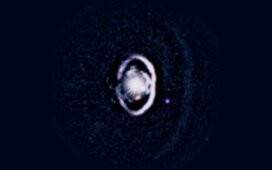Seeking life beyond the Solar System, we first look to the closest star systems with Earth-like planets. Here’s why that’s not good enough.
When it comes to finding life in the Universe, there’s still only one place that we know of that has it: right here on planet Earth. However, as science has recently shown us, both the raw ingredients needed for life as well as the conditions needed for life to flourish are very likely ubiquitous across the Universe, including right here in our own Milky Way. Earth may be very special in the sense that we — an intelligent, tool-using, technologically advanced civilization — have arisen on it, but for nearly all of our planet’s history, we were still an inhabited planet where life arose, survived, and thrived ever since.
One key ingredient, however, that’s thought to be necessary for life is liquid water. All living organisms here on Earth rely on it, even those that live under the most extreme (dry, hot, volcanic, high-pressure, etc.) conditions. So far, there are only two main ways known to have liquid water on a planet or planetary body:
- you can go down beneath the surface until there’s enough pressure, heat, and (potentially) salinity for water to…















